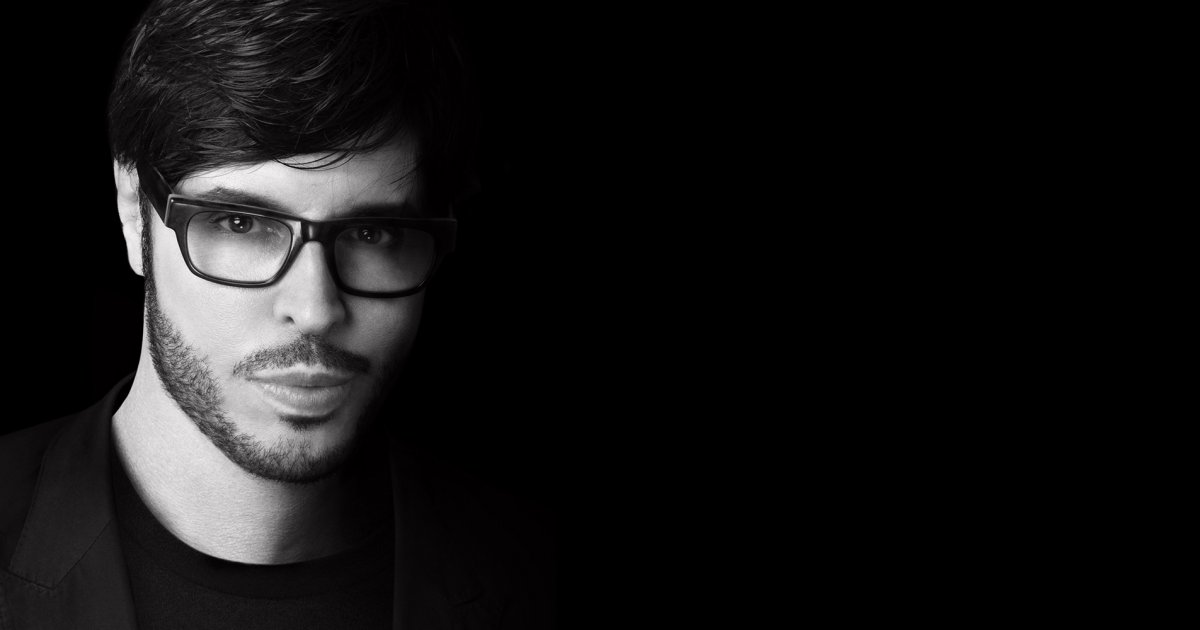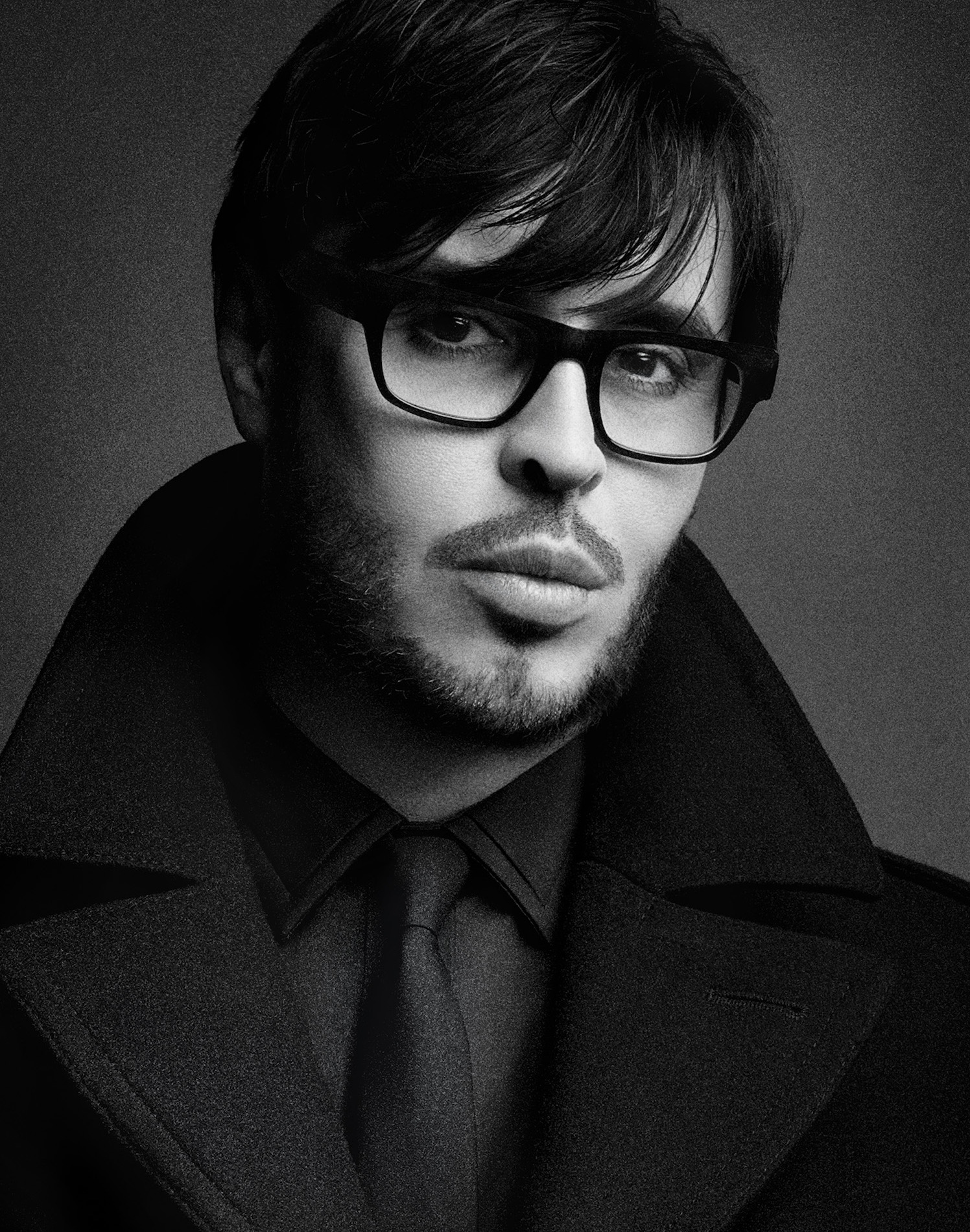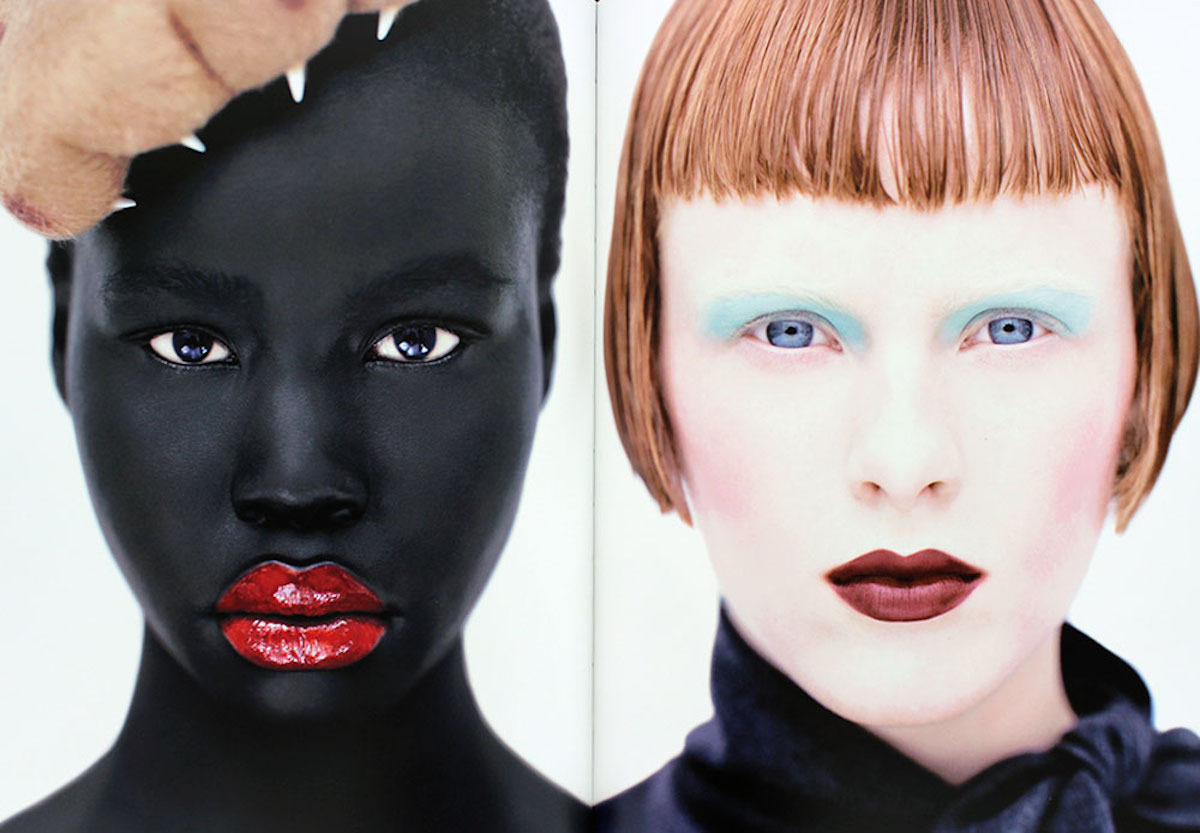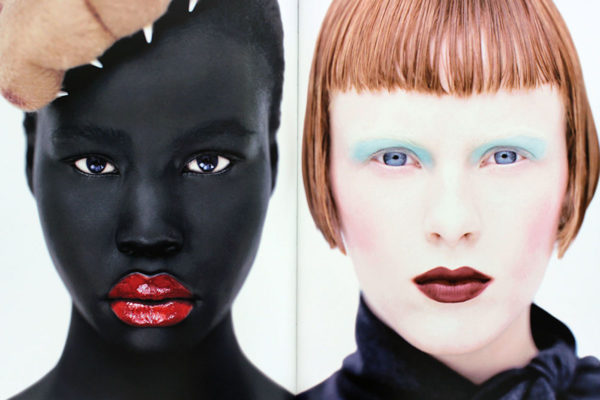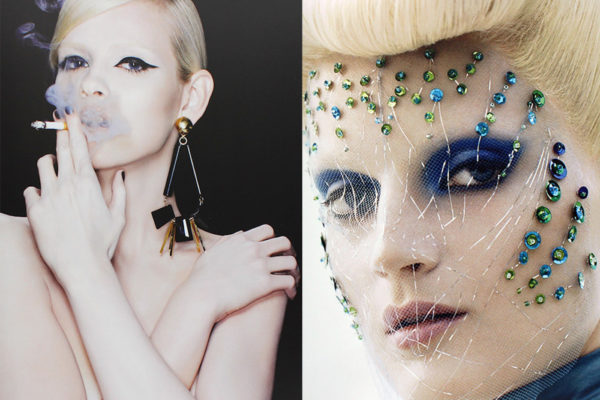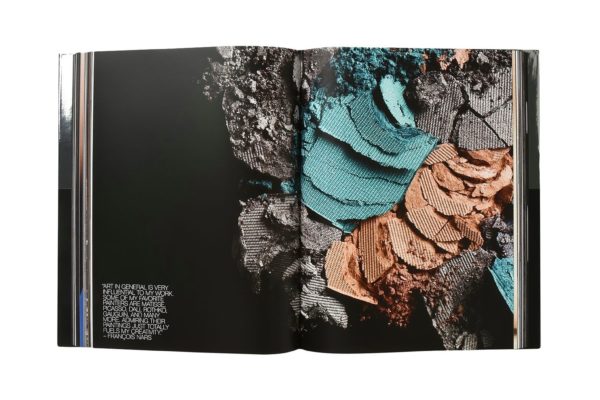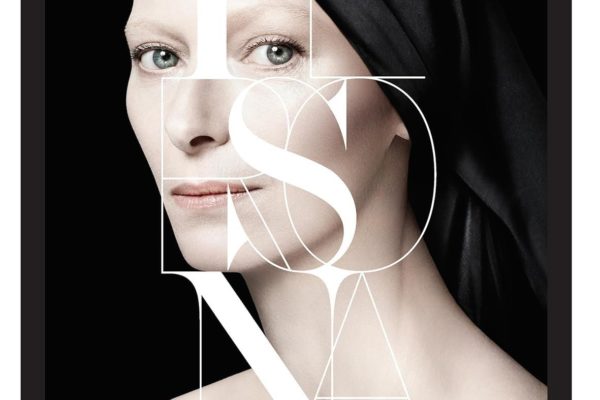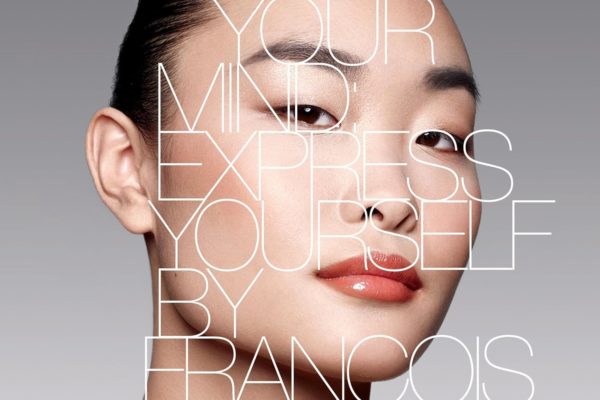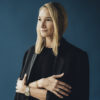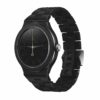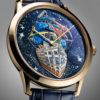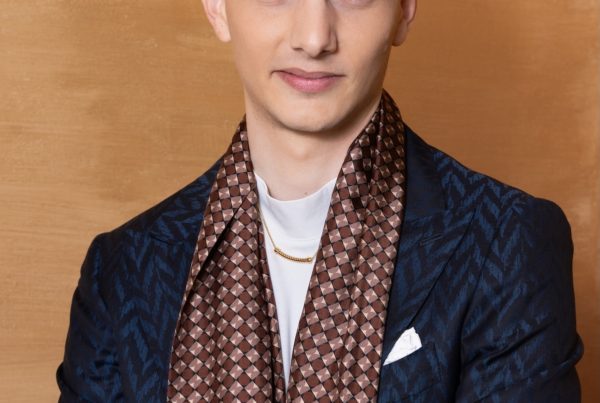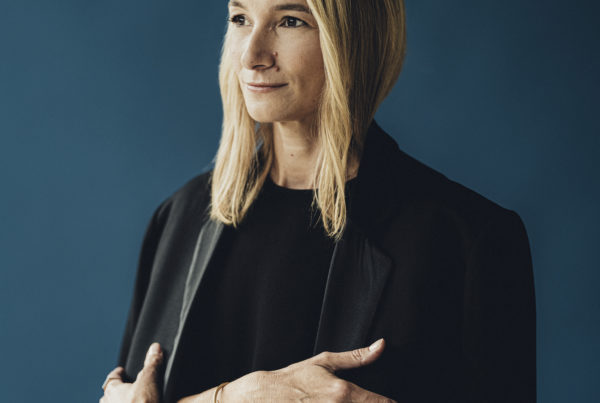François Nars, what have you done with your childhood dreams?
The make-up artist and photographer was the first to dare to go make-up-free for a series of fashion photos, launching the nude trend. His pigment-rich shades have equally powerful names. The best known? Orgasm blush, which gives cheeks the colours of love. I met him in New York in summer 2016. Archive interview. Isabelle Cerboneschi
François Nars is sitting in the lounge of the Ritz-Carlton, on Central Park, in New York. When he stands up, approaches with a smile and a hand out, I wonder if his internal clock broke on his 35th birthday? Working in beauty is a wonderful elixir. Something to think about in your next life…
Make-up artist and photographer François Nars was born in the South of France in 1959, surrounded by fairies, or rather elegant women – his mother Claudette and his two grandmothers Léa and Ginette – to whom he dedicates this book*. He grew up leafing through the pictures in Vogue, watching black and white films featuring the sublime faces of Greta Garbo and Marlene Dietrich. Nourished by this aesthetic, he was nevertheless the first to dare to use no make-up for fashion pictures. Just a little moisturiser to awaken the model’s beauty. Nude before its time, decades before its time.
After learning make-up at the Carita sisters’ school in Paris and working on a few catwalk shows, François Nars flew to New York in 1984 at the request of Polly Mellen, famous stylist for Harper’s Bazaar and then US Vogue. He landed in Manhattan in the middle of these flamboyant fashion years, when a group of emerging talents – designers, stylists, models, photographers – were in the process of defining a new aesthetic. François Nars quickly became the star make-up artist, the one everyone wanted on catwalks, advertising campaigns or fashion shoots. He worked with the greatest photographers: Paolo Roversi, Irving Penn, Helmut Newton, Richard Avedon, Patrick Demarchelier, Bruce Weber, Steven Meisel, to name but a few. It was to him that the stars – Isabella Rossellini, Anjelica Houston, Sharon Stone and Madonna, to name but a few – entrusted their faces. Until the day he decided to give up that life and set up his own business.
In 1994, he launched his first line of twelve lipsticks at Barneys in New York. Not make-up for self-effacing girls, no: he wanted his products to reveal a personality, and for women to literally fall in love with them. He was the first to invent extravagant names for his colours: Sex Machine, Bad Education or Deap Throat. You could write a porn book with the names of his colours. He wanted powerfully sexy names that women would remember. You don’t remember a number written in tiny letters under a lipstick but you can’t forget a lipstick called Never say never. Its best-seller? Orgasm blush, a golden, iridescent peachy-pink. François Nars is probably the only man on earth who can boast of having generated millions of dollars thanks to an orgasm, even a pigment one.
The four letters of his name take up all the space on the black packaging of his make-up lines designed by Fabien Baron. In 2000, François Nars sold his brand to Shiseido but remained artistic director.
INTERVIEW
What was your greatest childhood dream?
François Nars : I think it was to do what I wanted to do, which was to work in fashion. I must have been 12 when I started thinking about it. As a child, I wasn’t really thinking about a profession. My dream was to be happy every day, to have fun and enjoy childhood. I think I was very aware of the fact that, in the end, being a child was a very good thing: I had lots of fun, lots of friends, we were always ready to get into mischief.
Do you feel you’ve fulfilled that dream?
Oh yes, totally. I fulfilled a lot of my childhood and teenage dreams. When you’re a teenager, you start to realise a little bit what life is all about and what you’d like to do when you grow up. I realised my dream of becoming a make-up artist, a photographer and working in fashion with all the people I had admired in the magazines I leafed through when I was young. I was very lucky.
Even as a teenager, did you want to become a photographer and make-up artist?
Yes, very early on, around the age of 12, I knew exactly what I wanted to do when I grew up. I had this passion for fashion, for photography and for make-up. I was very precocious.
How did this passion come about?
We don’t really know how things are born… I think the explanation lies in my family. My mother and grandmothers were very elegant, very beautiful women. Maybe that was the first wake-up call: the awakening to fashion, beauty and elegance. And then my education came from the films I watched, the old silent films from the 30s with Garbo and Dietrich. I also read a lot of the magazines my mother bought, particularly French Vogue: in the 70s, it was THE best magazine in the world, the most sophisticated, the most glamorous! I think my passion stemmed from all that.
I saw a picture of Greta Garbo in the book dedicated to you*. You talk about her films. How did this imagery influence your make-up and colour choices later on?
I think it was the extreme sophistication, the extreme perfection of the cinema of the 20s and 30s that touched me and above all awakened me to an elegance, a glamour, an extraordinary perfectionism. It was the work of these extraordinary directors like Josef von Sternberg, who redesigned Marlene Dietrich’s face with light, all men who created the myths of those years, and who continue to influence me to this day. Garbo and Dietrich are always with me, all the time, when I’m working, whatever happens.
Is make-up a way of staging yourself?
Yes, make-up is a production, a fantasy. We’re entering a world where beauty is exaggerated. But make-up isn’t necessary, it’s an accessory.
What was your favourite toy?
I had lots of toys, but I wasn’t too spoilt. Until the mid-60s, there wasn’t the abundance of toys that there is today. My father bought me a film machine for Christmas. We projected them onto a wall. In those days, of course, there was no video, so they were mini Walt Disney films, bits and pieces because you couldn’t buy the whole film. I loved that little machine.
Did you keep it?
Sadly, no. Maybe I should have kept it, but with the advent of videos, CDs and DVDs, it went.
Did you dream in colour or black and white?
I can’t remember, to be honest, but I think it was in colour, even though I watched a lot of black and white films. When I dreamt of Marlene Dietrich, perhaps I dreamt of her in black and white…
Were you afraid of the dark?
Oh, like any child, yes, perhaps. I liked my bedroom door ajar when I went to sleep.
What was your favourite book?
I loved La Fontaine’s fables. I often read them. My grandmother also read them to me. It’s still one of my favourite books, and I have a whole collection of La Fontaine’s fables old books that my grandmother gave me.
Have you reread them since?
Yes, from time to time I leaf through them. They’re so topical!
If your childhood were a perfume, what would it be?
I think it would be my grandmothers’ two perfumes: Shalimar by Guerlain for one, and Detchema by Revillon for the other. These are scents that are in me. My mother’s perfume too, but especially that of my grandmothers. They were more… Let’s just say that there’s a natural warmth about grandparents and their scents stay with you forever. I sometimes smell Shalimar on someone and it immediately reminds me of my grandmother.
So it’s a love fragrance?
Yes, it is! It’s incredible how a fragrance can awaken the past and almost a presence. A scent is fabulous, even disturbing sometimes.
And if your childhood had one taste, what would it be?
The taste of my grandmother’s chocolate mousse, which she made extraordinarily well. I don’t think I’ve ever tasted a chocolate mousse as good as hers. We’ve tried making it again, several times, it’s close, but there’s always a consistency, a flavour that’s missing, no matter what.
Your mother helped you define your vision of beauty. What were the most important moments you had with her as a child?
When I was walking down the street with my mother, she was so elegant, so beautiful that she attracted all the attention, whatever she was doing. It wasn’t just the way she dressed, it was her beauty, a combination of things. And when she picked me up from school, the teachers were spellbound. I was very proud of her. It’s a very sweet memory.
When you started your career, what other women inspired you?
Being French, Catherine Deneuve has always been a muse. I grew up watching Catherine’s films, which I met much later. Charlotte Rampling, too, and a few Italian actresses like Claudia Cardinale, Sophia Loren and Silvana Mangano. This small group of women influenced me a lot because of their physique, their personality, their charisma, which was very powerful.
During the summer holidays, did you go to the seaside?
I spent most of my holidays in Biarritz. My parents and grandparents rented a house there and we stayed for the two summer months. It’s where I learned to love the ocean, the sea, the spray, the waves. The waves in Biarritz are extremely powerful. My mother would hold me in her arms and we’d stay in the waves. Some days they were very impressive. I wasn’t afraid of them. That was my holiday until I was 15-16.
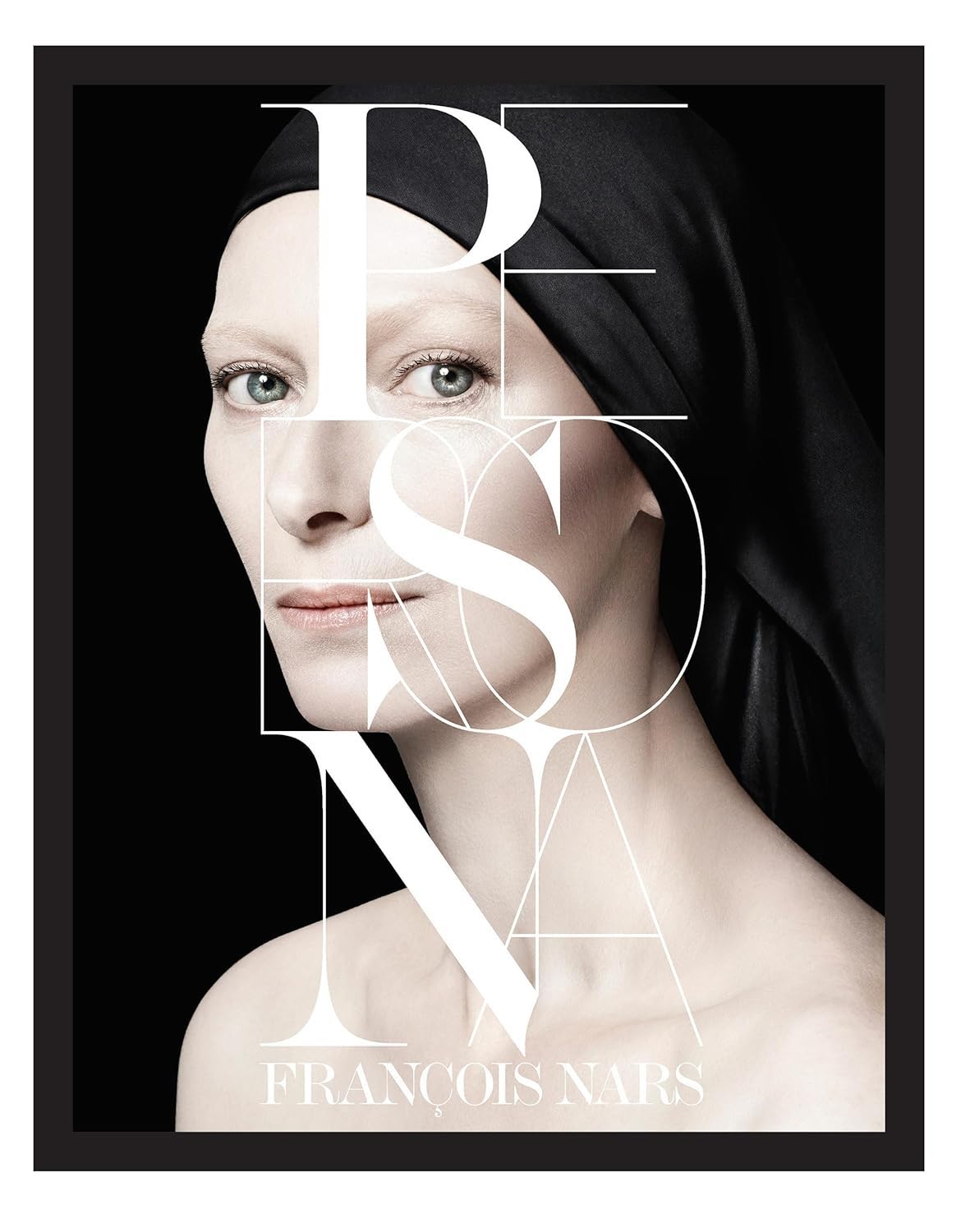
Did you climb trees?
No, I wasn’t a climber, but I swam a lot. I could spend hours and hours on the beach, on the sand.
Do you remember what you were like as a child?
I was a very loved child, very pampered by my parents and my grandparents, who adored me. I loved staying with my family. I didn’t like school very much, I preferred to be with my friends and family. So I was a very calm child except on the first day of school! It was always a nightmare.
Is this child still with you?
Oh, yes, absolutely. My whole childhood, all my memories are with me. It seems to me that in many ways I’m still very much a child. I think you age less quickly when you keep a childish side, without it becoming ridiculous of course. I still love to have fun, I love to laugh. I love being carefree – although that’s something you lose when you become an adult – that carefree childhood that I sometimes wish I could recapture.
* François Nars, Rizzoli International Publication INC, 2016

